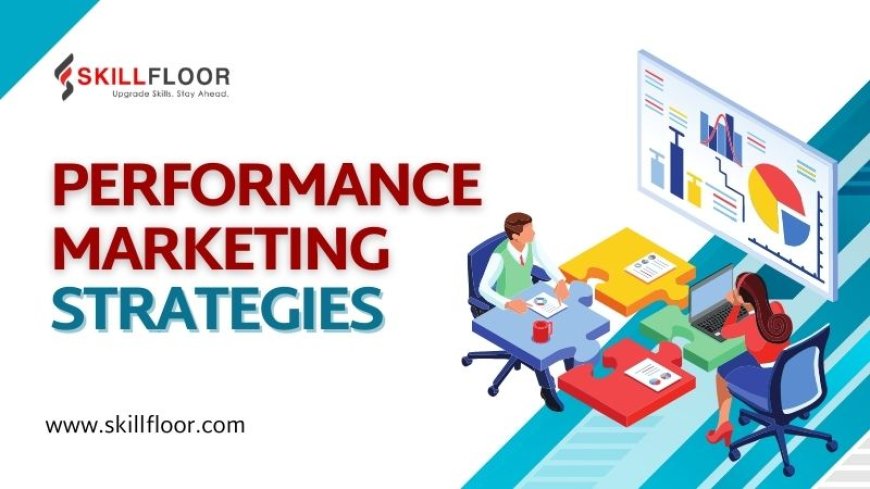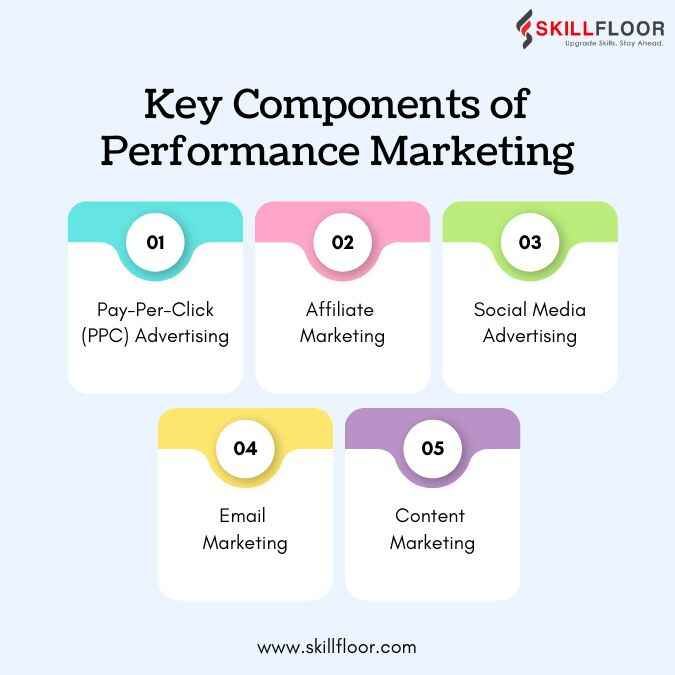Maximizing ROI with Performance Marketing Strategies
Discover effective performance marketing strategies to maximize ROI. Learn key tactics in digital advertising and campaign optimization.

Maximizing ROI with performance marketing strategies means using data-driven techniques to make your digital marketing efforts more effective. By focusing on measurable outcomes, you can allocate resources wisely and tailor your campaigns to achieve your goals. Performance marketing is all about real-time data analysis, which helps you tweak your tactics based on what’s working. This approach not only improves campaign results but also helps identify the most profitable channels and tactics. Using pay-per-click advertising, affiliate marketing, and social media advertising can further enhance your reach and precision.
Incorporating performance marketing strategies into your digital marketing plan ensures that every dollar you spend is tracked and accounted for. With tools like Google Analytics, you can gain insights into user behaviour, conversion rates, and customer journeys. These insights allow you to continually optimize your campaigns, refining targeting, messaging, and creative elements to boost engagement and conversions. Additionally, integrating performance marketing with other digital tactics like content marketing and email marketing creates a cohesive strategy that drives growth and profitability. This method not only improves ROI but also builds a solid foundation for long-term success in the digital world.
Key Components of Performance Marketing
-
Pay-Per-Click (PPC) Advertising: This involves placing ads on platforms like Google Ads or social media, where advertisers pay each time a user clicks on their ad. PPC campaigns can be highly targeted, ensuring that the ads reach the right audience.
-
Affiliate Marketing: In this model, businesses partner with affiliates who promote their products or services. Affiliates earn a commission for each sale or lead they generate, making it a win-win for both parties.
-
Social Media Advertising: Platforms like Facebook, Instagram, and LinkedIn offer robust advertising options that allow businesses to target specific demographics. These ads can be optimized for various actions, such as website visits, app installs, or purchases.
-
Email Marketing: While often considered a traditional marketing channel, email marketing can be highly performance-driven. Businesses can track open rates, click-through rates, and conversions to measure the effectiveness of their campaigns.
-
Content Marketing: High-quality content that resonates with the audience can drive significant traffic and conversions. Performance metrics like time spent on a page, bounce rate, and social shares help in measuring the success of content marketing efforts.

Setting Clear Objectives
The first step in maximizing ROI with performance marketing is setting clear, measurable objectives. Without well-defined goals, it is challenging to track progress and determine the effectiveness of your strategies. Common objectives include:
-
Increasing website traffic
-
Generating leads
-
Boosting sales
-
Improving brand engagement
By setting specific, achievable targets, businesses can align their marketing efforts and resources to achieve these goals.
Targeting the Right Audience
One of the key advantages of performance marketing is the ability to target specific audience segments. Effective audience targeting ensures that your marketing messages reach the people most likely to take the desired action. Here are some strategies for precise targeting:
-
Demographic Targeting: Focus on characteristics like age, gender, income, and education to reach the right audience.
-
Geographic Targeting: Tailor your campaigns to specific locations, whether it’s countries, cities, or even neighborhoods.
-
Behavioral Targeting: Analyze user behavior, such as browsing history, purchase patterns, and online activities, to create more personalized and relevant ads.
-
Interest Targeting: Leverage user interests and hobbies to deliver ads that resonate with their passions and preferences.
Creating Compelling Ad Creatives
The success of performance marketing campaigns heavily relies on the quality of ad creatives. Engaging and persuasive ads can significantly increase click-through rates (CTR) and conversions. Here are some tips for creating compelling ad creatives:
-
Clear and Concise Messaging: Ensure that your ad copy communicates the value proposition and includes a strong call-to-action (CTA).
-
Eye-Catching Visuals: Use high-quality images or videos that grab attention and convey your message effectively.
-
A/B Testing: Experiment with different versions of your ad creatives to determine what resonates best with your audience. Continuously optimize based on performance data.
-
Relevance: Make sure your ads are relevant to the audience you are targeting. Personalized ads tend to perform better than generic ones.
Leveraging Data and Analytics
Performance marketing is inherently data-driven. Leveraging data and analytics is crucial for optimizing campaigns and maximizing ROI. Here are some ways to make the most of your data:
-
Track Key Metrics: Monitor essential metrics such as CTR, conversion rate, cost per acquisition (CPA), and ROI. These metrics provide valuable insights into the performance of your campaigns.
-
Analyze User Behavior: Use tools like Google Analytics to understand how users interact with your website. Identify bottlenecks in the user journey and optimize for better conversions.
-
Attribution Models: Implement attribution models to understand the impact of different marketing channels and touchpoints. This helps in allocating the budget more effectively.
-
Regular Reporting: Create regular reports to track progress and identify areas for improvement. Use these reports to make data-driven decisions and refine your strategies.
Optimizing for Mobile
With the increasing use of smartphones, optimizing your performance marketing campaigns for mobile is no longer optional. Mobile optimization ensures that your ads are effective across all devices. Here are some tips:
-
Responsive Design: Ensure that your website and landing pages are mobile-friendly, with a responsive design that adapts to different screen sizes.
-
Fast Loading Speed: Mobile users are often impatient. Ensure that your website loads quickly to avoid losing potential customers.
-
Mobile-Specific Ads: Create ad creatives specifically designed for mobile devices. Use vertical videos and concise text to cater to mobile users.
-
App Advertising: If you have a mobile app, invest in app install campaigns to drive more downloads and engagement.
Budget Management
Effective budget management is crucial for maximizing ROI in performance marketing. Here are some strategies to manage your budget effectively:
-
Allocate Budget Wisely: Based on the performance data, allocate more budget to high-performing campaigns and channels. Conversely, reduce or eliminate spending on underperforming ones.
-
Set Bidding Strategies: Use bidding strategies that align with your objectives. For example, if your goal is to drive conversions, consider using a target CPA or ROAS (Return on Ad Spend) bidding strategy.
-
Monitor Spend: Keep a close eye on your daily and monthly spending to ensure you stay within your budget. Use automated rules and alerts to manage your spending effectively.
-
Scale Gradually: As you identify successful campaigns, scale them gradually to maximize ROI without overspending.
Continuous Optimization
Performance marketing is not a set-it-and-forget-it strategy. Continuous optimization is key to maintaining and improving ROI. Here’s how to keep your campaigns optimized:
-
Regularly Review Performance: Analyze your campaign performance regularly and make necessary adjustments. Look for trends and patterns to inform your optimization efforts.
-
Update Ad Creatives: Refresh your ad creatives periodically to avoid ad fatigue and keep your audience engaged.
-
Test New Strategies: Don’t be afraid to experiment with new strategies and channels. Continuous testing can uncover new growth opportunities.
-
Stay Updated with Trends: The digital marketing landscape is constantly evolving. Stay updated with the latest trends and technologies to keep your performance marketing strategies current and effective.
Maximizing ROI with performance marketing strategies requires a combination of clear objectives, precise targeting, compelling creatives, data-driven decision-making, mobile optimization, effective budget management, and continuous optimization. By focusing on measurable results and constantly refining your approach, you can achieve significant growth and profitability in your digital marketing efforts. Performance marketing not only provides a high ROI but also offers a scalable and adaptable approach to meet the ever-changing demands of the market.




























































